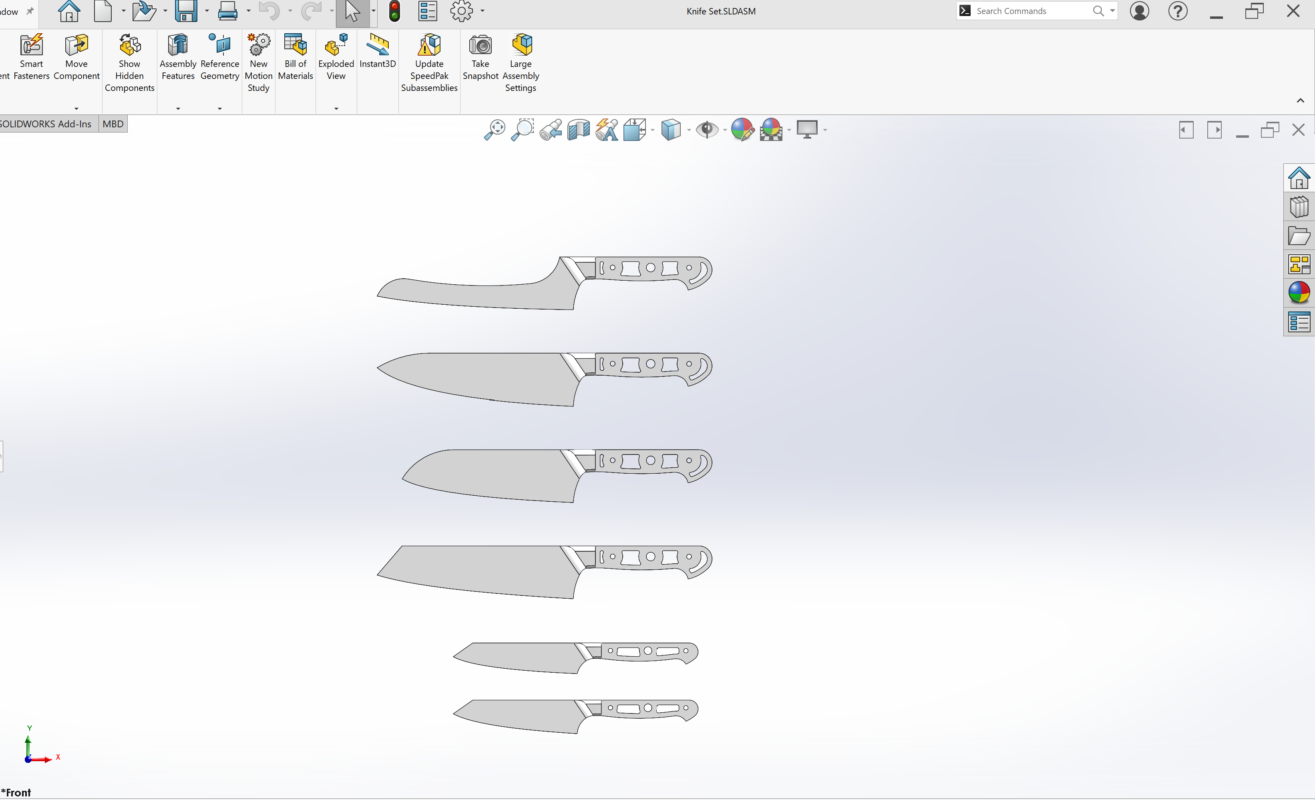Chef's Knives, Kitchen Knives Manufacturer
Designing the Perfect Kitchen Knife
Hello my name is Joseph, as a knife designer, I’ve spent years studying what makes a kitchen knife not just functional—but exceptional. A well-designed knife is more than just a tool; it’s an essential extension of the chef’s hand, combining performance, comfort, and beauty. Whether you’re a culinary professional or a home cook, understanding the art and science behind knife design can transform your experience in the kitchen.
In this post, I’ll walk you through the key considerations in designing a kitchen knife—from blade geometry to materials—based on years of hands-on experience and collaboration with manufacturers like WholesaleChefKnife.com.
1. Designing Kitchen Knife with Purpose
Every knife begins with a question: What is it designed to do?
Different types of kitchen knives serve different purposes—chef’s knives for all-around use, santoku for precision slicing, cleavers for heavy-duty chopping, and utility knives for smaller prep tasks. The first step in design is knowing the function and target user, whether it’s a home cook seeking versatility or a professional chef demanding precision.
2. Anatomy of a Knife
A knife is more than just a blade. A well-designed knife considers all its components:
- Blade: Determines cutting performance and durability.
- Edge: Influences sharpness, grind, and cutting style.
- Handle: Affects comfort, grip, and control.
- Tang: Impacts strength and balance.
- Bolster: Adds weight and finger protection.
Each part must work together to create a balanced, efficient tool.
3. Choosing the Right Materials
Blade Materials
The blade is the heart of the knife. Here’s a comparison of common materials:
| Material | Pros | Cons |
|---|---|---|
| Stainless Steel | Rust-resistant, low maintenance | Softer, dulls faster |
| High-Carbon Steel | Holds sharp edge, easy to sharpen | Prone to rust, needs care |
| Damascus Steel | Beautiful patterns, layered strength | Expensive, quality varies |
| VG-10 / Japanese Steels | Razor-sharp, excellent edge retention | Brittle, requires careful use |
Handle Materials
The handle influences comfort and aesthetics:
| Material | Pros | Cons |
|---|---|---|
| Wood | Natural feel, classic look | Can warp or stain |
| Micarta / G10 | Durable, water-resistant | Less traditional appearance |
| Plastic / Polypropylene | Affordable, hygienic | Can feel cheap or brittle |
| Stainless Steel | Sleek and strong | Slippery, cold in hand |
Choosing the right combination of blade and handle materials depends on the knife’s purpose and the market you’re designing for.
4. Blade Geometry and Edge Design
The blade’s shape and thickness determine its cutting style. Thin blades offer precision, while thicker ones add durability. Edge grinds—like flat, hollow, or convex—affect how the blade cuts through food. Tip design, heel shape, and spine thickness are all subtle elements that influence performance.
5. Handle Ergonomics
A knife handle should feel like a natural extension of the hand. That means:
- Comfortable grip (even when wet)
- Balanced weight distribution
- Non-slip texture
- Aesthetic appeal that reflects your brand
Ergonomic design reduces fatigue and enhances safety—crucial for both casual users and professionals.
6. Customization & Branding
In a crowded market, personalization sets your knives apart. At WholesaleChefKnife.com, we offer OEM and private label services—including:
- Custom logos
- Unique handle materials
- Signature blade patterns
- Branded packaging
This allows designers like you to build a unique identity and loyal customer base.
7. Manufacturing Process
Turning a design into a finished product requires:
- Sketching and prototyping
- Material sourcing
- Blade forging and finishing
- Handle crafting and assembly
- Quality control inspections
Partnering with trusted manufacturers ensures consistency, scalability, and quality. We proudly manufacture in Yangjiang—the world’s kitchen knife capital—with over 20 years of experience.
8. Modern Trends in Knife Design
Today’s customers are looking for more than function. Trends include:
- Japanese-style blades for precision
- Damascus and hammered finishes for visual appeal
- Sustainable materials like recycled wood or eco-resins
- Minimalist designs with clean lines and neutral colors
Staying ahead of these trends ensures your knives remain relevant and desirable.
A kitchen knife is one of the most important tools in the culinary world. As a designer, your mission is to create a knife that feels right in the hand, performs flawlessly, and tells a story. At WholesaleChefKnife.com, we’re here to help you turn your vision into reality with high-quality materials, expert manufacturing, and full customization support.


